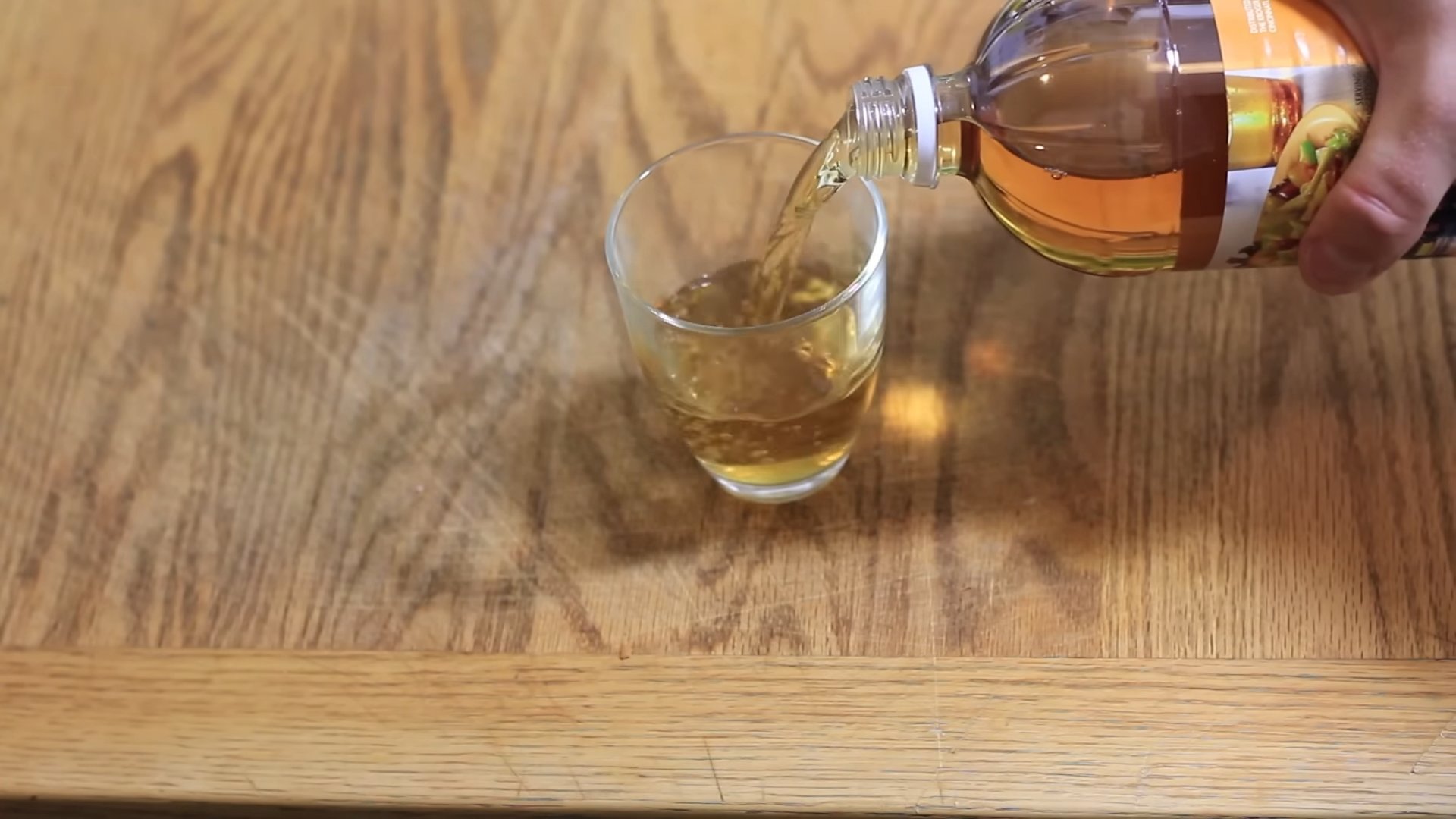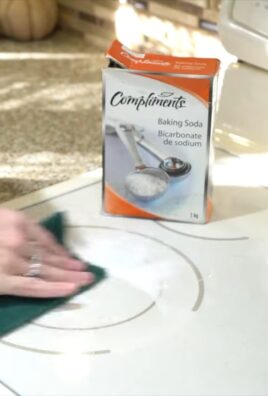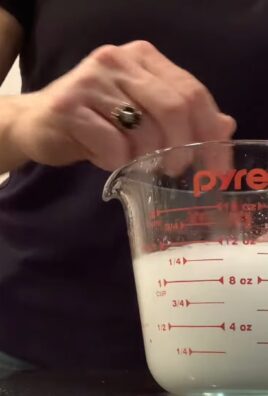Vinegar cleaning hacks – who knew this humble kitchen staple could be your secret weapon to a sparkling home? I’m constantly amazed by the versatility of vinegar, and I’m excited to share some of my favorite DIY cleaning tricks that will save you money and reduce your reliance on harsh chemicals.
For centuries, vinegar has been more than just a condiment. Ancient civilizations, from the Babylonians to the Romans, used vinegar for cleaning, preserving food, and even medicinal purposes. It’s a testament to its effectiveness that this age-old remedy is still relevant today.
Let’s face it, cleaning can be a chore, and those store-bought cleaning products can be expensive and full of ingredients you can’t even pronounce. That’s where these vinegar cleaning hacks come in! I’m going to show you how to tackle everything from stubborn stains to grimy surfaces with just a bottle of vinegar and a few simple supplies. Not only will you save money, but you’ll also be creating a healthier environment for yourself and your family. So, grab your vinegar, and let’s get started on these easy and effective DIY cleaning solutions!

Unlocking the Cleaning Power of Vinegar: DIY Hacks for a Sparkling Home
Hey there, fellow DIY enthusiasts! I’m so excited to share some of my favorite vinegar cleaning hacks with you. Vinegar is a true cleaning superhero – it’s natural, affordable, and incredibly versatile. Forget those harsh chemicals; let’s dive into how you can use this pantry staple to make your home shine!
General Vinegar Cleaning Tips
Before we jump into specific projects, here are a few general tips to keep in mind when cleaning with vinegar:
* Dilution is Key: Always dilute vinegar with water, especially when cleaning delicate surfaces. A 50/50 solution is usually a good starting point.
* Test First: Before applying vinegar to a large area, test it on a small, inconspicuous spot to ensure it doesn’t damage the surface.
* Ventilation is Important: Vinegar has a strong odor, so make sure to open windows or turn on a fan while you’re cleaning.
* Don’t Mix with Bleach: This is crucial! Mixing vinegar with bleach creates toxic chlorine gas, which is extremely dangerous.
* White Distilled Vinegar is Your Best Friend: This is the most common and effective type of vinegar for cleaning.
Cleaning Your Kitchen with Vinegar
The kitchen is often the dirtiest room in the house, but vinegar can help you tackle even the toughest messes.
Cleaning the Microwave
Microwaves can get pretty gross with splattered food and lingering odors. Here’s how to clean yours with vinegar:
1. Prepare the Solution: Fill a microwave-safe bowl with 1 cup of water and 1/4 cup of white distilled vinegar.
2. Microwave the Mixture: Place the bowl in the microwave and heat it on high for 5-7 minutes. The steam will loosen the grime.
3. Let it Sit: Leave the door closed for another 5 minutes to allow the steam to work its magic.
4. Wipe it Down: Carefully remove the bowl (it will be hot!) and wipe down the inside of the microwave with a clean cloth or sponge. The grime should come off easily.
5. Tackle Stubborn Spots: For any stubborn spots, dip a cloth in the vinegar solution and scrub gently.
6. Ventilate: Leave the microwave door open for a few minutes to air it out.
Cleaning the Coffee Maker
Over time, mineral deposits can build up in your coffee maker, affecting the taste of your coffee. Vinegar can help descale it:
1. Prepare the Vinegar Solution: Fill the water reservoir of your coffee maker with a 50/50 solution of white distilled vinegar and water.
2. Run a Brewing Cycle: Turn on the coffee maker and let it run through a full brewing cycle.
3. Rinse with Water: Empty the carafe and fill the water reservoir with fresh water. Run two or three more brewing cycles to rinse out any remaining vinegar.
4. Enjoy Fresh Coffee: Your coffee maker should now be clean and ready to brew delicious coffee!
Cleaning the Dishwasher
Dishwashers can also accumulate grime and odors. Here’s how to clean yours with vinegar:
1. Empty the Dishwasher: Make sure your dishwasher is completely empty.
2. Place Vinegar in a Bowl: Place a dishwasher-safe bowl filled with 1 cup of white distilled vinegar on the top rack of the dishwasher.
3. Run a Hot Cycle: Run the dishwasher on a hot cycle.
4. Repeat Monthly: Repeat this process once a month to keep your dishwasher clean and fresh.
Cleaning Cutting Boards
Cutting boards, especially wooden ones, can harbor bacteria. Vinegar is a great natural disinfectant:
1. Rinse the Cutting Board: Rinse the cutting board with warm water.
2. Spray with Vinegar: Spray the cutting board with undiluted white distilled vinegar.
3. Let it Sit: Let the vinegar sit for a few minutes to disinfect the surface.
4. Rinse Again: Rinse the cutting board thoroughly with warm water.
5. Dry Completely: Allow the cutting board to air dry completely.
Cleaning Stainless Steel Appliances
Vinegar can help remove fingerprints and water spots from stainless steel appliances:
1. Dilute the Vinegar: Mix equal parts white distilled vinegar and water in a spray bottle.
2. Spray and Wipe: Spray the solution onto the stainless steel surface and wipe it down with a soft cloth.
3. Buff Dry: Buff the surface dry with a clean, dry cloth to prevent streaks.
4. Follow the Grain: Always wipe in the direction of the grain of the stainless steel.
Cleaning Your Bathroom with Vinegar
The bathroom is another area where vinegar can really shine.
Cleaning Showerheads
Mineral deposits can clog showerheads, reducing water pressure. Here’s how to clean them with vinegar:
1. Fill a Bag with Vinegar: Fill a plastic bag with white distilled vinegar.
2. Secure the Bag: Secure the bag around the showerhead with a rubber band or twist tie, ensuring the showerhead is completely submerged in the vinegar.
3. Soak Overnight: Let the showerhead soak overnight.
4. Remove and Rinse: Remove the bag and rinse the showerhead thoroughly with water.
5. Wipe Clean: Wipe the showerhead clean with a cloth.
Cleaning Toilets
Vinegar can help remove stains and odors from toilets:
1. Pour Vinegar into the Bowl: Pour 1-2 cups of white distilled vinegar into the toilet bowl.
2. Let it Sit: Let the vinegar sit for at least an hour, or preferably overnight.
3. Scrub and Flush: Scrub the bowl with a toilet brush and flush.
4. Clean Under the Rim: For stubborn stains under the rim, soak a paper towel in vinegar and stick it under the rim for a few hours before scrubbing.
Cleaning Shower Doors
Soap scum can build up on shower doors, making them look cloudy. Vinegar can help remove it:
1. Heat the Vinegar: Heat 1 cup of white distilled vinegar in the microwave until it’s warm (not boiling).
2. Pour into a Spray Bottle: Pour the warm vinegar into a spray bottle.
3. Spray and Let Sit: Spray the vinegar onto the shower doors and let it sit for 15-20 minutes.
4. Scrub and Rinse: Scrub the doors with a sponge or scrub brush and rinse thoroughly with water.
5. Dry with a Squeegee: Dry the doors with a squeegee to prevent water spots.
Cleaning Grout
Grout can get stained and discolored over time. Vinegar can help brighten it:
1. Prepare the Paste: Mix equal parts white distilled vinegar and baking soda to form a paste.
2. Apply the Paste: Apply the paste to the grout lines.
3. Let it Sit: Let the paste sit for 15-20 minutes.
4. Scrub and Rinse: Scrub the grout lines with a scrub brush and rinse thoroughly with water.
Other Vinegar Cleaning Hacks
Vinegar isn’t just for the kitchen and bathroom; it can be used to clean other areas of your home as well.
Cleaning Windows and Mirrors
Vinegar can leave your windows and mirrors sparkling clean:
1. Dilute the Vinegar: Mix equal parts white distilled vinegar and water in a spray bottle.
2. Spray and Wipe: Spray the solution onto the window or mirror and wipe it down with a clean cloth or paper towel.
3. Buff Dry: Buff the surface dry with a clean, dry cloth to prevent streaks.
Removing Stickers and Labels
Vinegar can help loosen the adhesive on stickers and labels:
1. Soak the Sticker: Soak a cotton ball or cloth in white distilled vinegar.
2. Apply to the Sticker: Apply the soaked cotton ball or cloth to the sticker or label and let it sit for a few minutes.
3. Peel and Wipe: Gently peel off the sticker or label and wipe away any remaining residue with a clean cloth.
Freshening Laundry
Vinegar can be used as a natural laundry booster and fabric softener:
1. Add to the Wash: Add 1/2 cup of white distilled vinegar to the washing machine during the rinse cycle.
2. Deodorize Clothes: Vinegar can help remove odors from clothes, especially musty or smoky smells.
3. Brighten Whites: Vinegar can help brighten white clothes.
Cleaning Your Iron
Mineral buildup can clog the steam vents of your iron. Here’s how to clean it with vinegar:
1. Empty the Iron: Empty any water from the iron.
2.

Conclusion
So, there you have it! Unlocking the power of vinegar cleaning hacks is not just about saving money; it’s about embracing a more sustainable and effective approach to keeping your home sparkling. We’ve explored a range of applications, from tackling stubborn hard water stains to banishing lingering odors, all with a single, readily available ingredient: vinegar.
But why is this DIY trick a must-try? Simply put, it’s the trifecta of affordability, effectiveness, and eco-friendliness. Commercial cleaners often come with a hefty price tag and a list of harsh chemicals that can be detrimental to both your health and the environment. Vinegar, on the other hand, is budget-friendly, readily biodegradable, and surprisingly powerful against a wide array of household messes.
Think about the satisfaction of knowing you’re not contributing to the plastic waste problem with yet another single-use cleaning bottle. Imagine the peace of mind knowing that the surfaces your children and pets come into contact with are cleaned with a natural, non-toxic solution. That’s the power of vinegar cleaning.
Beyond the basics, there’s a world of variations to explore. Infuse your vinegar with citrus peels for a refreshing scent and added cleaning power. Experiment with different dilutions to find the perfect balance for your specific needs. For tougher stains, consider creating a paste of vinegar and baking soda for a powerful scrubbing action. You can even use vinegar to revive your dull laundry, leaving it brighter and fresher than ever before.
Don’t be afraid to experiment and personalize your vinegar cleaning routine! The possibilities are truly endless.
We’ve only scratched the surface of what vinegar can do. From cleaning your microwave to unclogging drains, this versatile liquid is a true household hero. It’s time to ditch the harsh chemicals and embrace the natural cleaning power of vinegar.
We wholeheartedly encourage you to try these vinegar cleaning hacks and discover the difference for yourself. Start with a small project, like cleaning your showerhead or freshening up your dishwasher. Once you see the results, you’ll be amazed at the versatility and effectiveness of this simple ingredient.
And most importantly, we want to hear about your experiences! Share your favorite vinegar cleaning hacks, tips, and tricks in the comments below. Let’s build a community of eco-conscious cleaners who are passionate about creating a healthier and more sustainable home. What unexpected uses have you found for vinegar? What challenges have you overcome? Your insights could inspire others to embrace the power of vinegar cleaning and make a positive impact on the environment. So, go ahead, give it a try, and let us know what you think! Your feedback is invaluable as we continue to explore the endless possibilities of natural cleaning solutions.
Frequently Asked Questions (FAQ)
Is vinegar safe to use on all surfaces?
While vinegar is a versatile cleaner, it’s not suitable for all surfaces. Avoid using it on natural stone surfaces like marble, granite, and limestone, as the acidity can etch and damage them. It’s also best to avoid using vinegar on waxed wood furniture, as it can strip the wax finish. Always test vinegar on an inconspicuous area before applying it to a larger surface, especially if you’re unsure about its compatibility. For delicate surfaces, dilute the vinegar with water to reduce its acidity. When in doubt, consult the manufacturer’s instructions for the surface you’re cleaning.
What type of vinegar is best for cleaning?
Distilled white vinegar is the most commonly recommended type of vinegar for cleaning. It’s inexpensive, readily available, and has a consistent acidity level, making it a reliable choice for a wide range of cleaning tasks. While other types of vinegar, such as apple cider vinegar, can also be used for cleaning, they may have a stronger odor and could potentially stain some surfaces. For general cleaning purposes, stick to distilled white vinegar for the best results.
How do I get rid of the vinegar smell after cleaning?
The vinegar smell can be a deterrent for some people, but it typically dissipates quickly. To minimize the odor, ensure good ventilation by opening windows or using a fan while cleaning. You can also add a few drops of essential oils, such as lemon, lavender, or eucalyptus, to your vinegar solution to mask the smell. Another option is to wipe down the cleaned surfaces with a damp cloth after cleaning with vinegar to remove any lingering residue. The smell usually disappears within an hour or two.
Can I mix vinegar with other cleaning products?
It’s generally not recommended to mix vinegar with other cleaning products, especially bleach. Mixing vinegar with bleach can create toxic chlorine gas, which can be harmful to your health. Avoid mixing vinegar with ammonia-based cleaners as well, as this can produce toxic chloramine vapors. When using vinegar for cleaning, it’s best to use it on its own or with other natural ingredients like baking soda or essential oils. Always read the labels of your cleaning products carefully and avoid mixing them unless specifically instructed to do so.
How do I clean my coffee maker with vinegar?
Cleaning your coffee maker with vinegar is a simple and effective way to remove mineral buildup and improve its performance. Fill the water reservoir with a solution of equal parts white vinegar and water. Run the coffee maker through a full brewing cycle, allowing the vinegar solution to sit in the carafe for about 30 minutes. Then, discard the vinegar solution and run the coffee maker through two or three more brewing cycles with fresh water to rinse away any remaining vinegar. This will help remove any lingering vinegar taste and ensure your coffee tastes fresh and clean.
Can vinegar be used to clean laundry?
Yes, vinegar can be a surprisingly effective laundry booster. Adding a cup of white vinegar to your washing machine during the rinse cycle can help brighten clothes, remove odors, and soften fabrics. Vinegar can also help remove soap residue and prevent lint from clinging to clothes. It’s a natural and eco-friendly alternative to fabric softeners and can leave your laundry smelling fresh and clean. Just be sure to avoid using vinegar with bleach, as this can create harmful fumes.
How can I use vinegar to unclog a drain?
Vinegar and baking soda can be a powerful combination for unclogging drains. Pour about a cup of baking soda down the drain, followed by a cup of white vinegar. Let the mixture fizz and bubble for about 30 minutes, then flush the drain with hot water. The baking soda and vinegar react to create carbon dioxide gas, which can help break up clogs and clear the drain. For stubborn clogs, you may need to repeat the process a few times. If the clog persists, it’s best to consult a professional plumber.




Leave a Comment